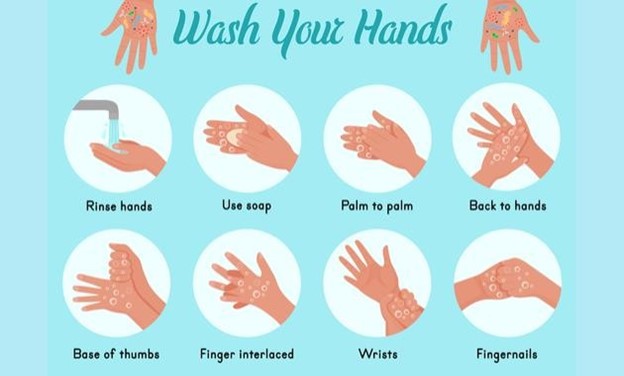A nurse is preparing to perform hand hygiene. Which of the following actions should the nurse take?
Rub hands and arms to dry.
Adjust the water temperature to feel hot.
Apply 4 to 5 mL of liquid soap to the hands.
Hold the hands higher than the elbows.
The Correct Answer is C
A. Rubbing hands and arms to dry is not the correct action for hand hygiene. After applying soap, hands should be rinsed thoroughly with water and then dried using a clean towel or air dryer.
B. Adjusting the water temperature to feel hot is not recommended for hand hygiene.
Water that is too hot can be uncomfortable and may even cause skin irritation. The water should be comfortably warm.
C. Applying 4 to 5 mL of liquid soap to the hands is the correct action. This provides an adequate amount of soap to create a good lather for effective handwashing.
D. Holding the hands higher than the elbows is not a necessary step for hand hygiene.
The focus should be on thoroughly cleaning the hands, not on the position of the hands in relation to the elbows.

Nursing Test Bank
Naxlex Comprehensive Predictor Exams
Related Questions
Correct Answer is B
Explanation
A. Using a computer terminal in a non-public area is appropriate and helps maintain client confidentiality.
B. Sharing computer passwords with coworkers is a serious breach of client confidentiality and security. Each individual should have their own unique login credentials to ensure accountability and protect sensitive information.
C. Logging out of the computer before leaving a terminal is a standard practice to protect client information from unauthorized access.
D. Preventing an unidentified healthcare worker from viewing a health record on the computer screen is a responsible action to protect client confidentiality.
Correct Answer is A
Explanation
A. Gloves should be removed first. This is because the gloves are the items most likely to be contaminated. To remove gloves, grasp the outside edge near the wrist and peel them off, turning them inside out as you go.
B. The gown should be removed next. The gown protects the nurse's clothing from contamination. Untie or unfasten the gown, and then carefully remove it, taking care to avoid touching the outside of the gown.
C. Face shields or goggles should be removed next if used. This helps protect the eyes and face. Handle the shield or goggles by the headband or earpieces and remove them without touching the front.
D. Mask should be removed last. The mask helps protect the respiratory system. Untie or unhook the mask from behind the ears or head and discard it.
Whether you are a student looking to ace your exams or a practicing nurse seeking to enhance your expertise , our nursing education contents will empower you with the confidence and competence to make a difference in the lives of patients and become a respected leader in the healthcare field.
Visit Naxlex, invest in your future and unlock endless possibilities with our unparalleled nursing education contents today
Report Wrong Answer on the Current Question
Do you disagree with the answer? If yes, what is your expected answer? Explain.
Kindly be descriptive with the issue you are facing.
